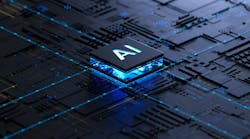Top 2019 Trends Impacting the World’s Escalating Demand for Data and Power
Jim Witham, CEO of GaN Systems, explores the top 2019 data center power trends, and highlights new perspectives and approaches to thinking about and addressing the power needs of the diverse technology that surrounds us.
Jim Witham, CEO of GaN Systems
Energy use is a critical challenge for data centers — not only for individual operators, but also for this industry and even the world. Today, eight million data centers are needed to manage the 2.5 quintillion bytes of data that are created each day. And the pressure to build more data centers will only continue to mount in 2019 in order to handle the growing global data load from both businesses and consumers – smart phones to IoT to increasingly autonomous vehicles and factories. With each data center using about the same amount of energy as a mid-size city, this sums up to an astronomical 416 terawatt hours of electricity by the industry each year.
Over the past year, in conversations with corporate leaders, it is more evident than ever before that GaN technology is the clear and undisputed solution for driving more robust growth and product innovation, as well as enabling companies to elevate the conversation and engage more deeply in sustainability initiatives.
If we are to evolve globally, power cannot be taken for granted and simply viewed as an endless resource that comes out of a plug in a wall.
Why GaN? Gallium nitride (GaN) power semiconductors overcome the silicon limitations and facilitate power electronics development, due to their ability to increase the overall power efficiency as the GaN power semiconductors work effectively at higher frequencies and power levels with minimal losses, unlike silicon semiconductors. Hence, this leads to reduced power losses and smaller systems in many power-reliant markets such as data centers – creating substantial energy and cost savings. The rising demand for operational efficiency facilitates the prospects of GaN power semiconductors due to such noteworthy features like high switching frequency that doubles the energy efficiency improvement in these naturally bidirectional systems.
In 2018, GaN Systems, the global leader of GaN power semiconductors, saw autonomous robots powered by AI transforming factories, and our environment, including the remote-controlled, floating, trash-collecting robots that eliminate trash from Chicago’s rivers. IoT-enabled smart cities, such as Barcelona, Singapore and Denver, are already saving millions in energy and labor efficiency while improving citizen services and public safety. 5G services will be available in U.S. cities in 2019, ushering in new augmented reality mobility applications that will make Pokémon Go seem like a relic of the past.
Looking ahead to 2019, we predict that the ever-increasing influx of massive amounts of data and the explosive demand for energy will continue to be deeply linked – and will become even more so demanding with the rise of 5G, AI, and blockchain technologies.
In data centers, we will see:
- Continued push for energy efficiency and density – as computationally heavy demands grow and tech such as AI, electric vehicle, 5G and blockchain begin to be integrated across the infrastructure and operations of key industries
- Operators will need to evolve from today’s server rack designs – and embrace technology to increase data and power density.
- IoT devices will require the data center industry to continue to reinvent itself – not only incrementally adding more security and robustness, but also evolving the edge with new kinds of edge/locally-focused data centers.
- Highly-efficient power supplies are key to the necessary evolution of the data center, tackling the challenge of increased energy conversion efficiency and enabling greater server rack density.
At the center of these 2019 data and power trends is the undeniable need for new ways of thinking about and addressing the power needs of the diverse technology that surrounds us. If we are to evolve globally, power cannot be taken for granted and simply viewed as an endless resource that comes out of a plug in a wall. Our global power footprint cannot continue to grow at past historic rates – for both business reasons and the health of our planet.
Jim Witham is CEO of GaN Systems.


